Take a stand for public land deer
ON 10-28-2020
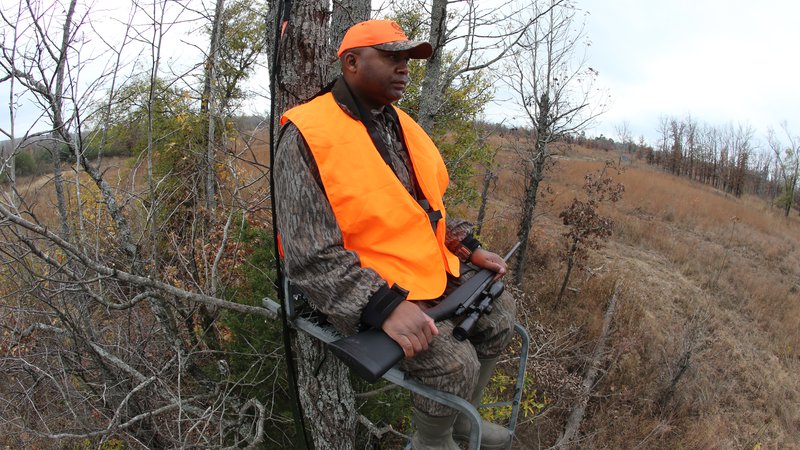
Oct. 28, 2020
Randy Zellers
Assistant Chief of Communications
LITTLE ROCK — With the exception of maybe hunter orange and a rifle, few pieces of equipment are more representative of the white-tailed deer hunting experience as a tree stand. When scouting out places to hunt on public land, most hunters are looking for that perfect place to hang a stand about 16- to 20-feet against a tree to give them an advantage over their target. For hunters on private land, stands may sit for decades and include so many modern comforts, they resemble a child’s dream treehouse. Hunters using stands and ground blinds on public land in Arkansas, however, must have a “here today, gone tomorrow” attitude.
“According to Arkansas law, you may not leave anything out overnight on a wildlife management area, except blinds, trail cameras and stands,” Garrick Dugger, assistant chief of the Arkansas Game and Fish Commission’s Wildlife Management Division, said. “It’s public property that is available for everyone to hunt, so we have to make sure a single hunter or group of hunters doesn’t lay claim to an area for the entire season and keep other hunters from enjoying the opportunity to hunt.”
Stands and pop-up blinds on WMAs must have the owner’s name and address labeled on them and they must be moved at least 200 yards every seven days. While seven days may not seem like much time, it can be an eternity to wait if you are interested in hunting an area.
“During that time, I suggest other hunters give that person their space and maybe check out a few ‘Plan B’ areas,” Dugger said. “Public land hunters have to adapt to hunting pressure as well as the game, so it’s always good to have a few areas you have some confidence in if someone is already in a spot you wanted to hunt. It’s also good to scout nearby to make sure you arent’ setting up just out of sight of another hunter. It can be easy to set up just past a ridge or treeline from someone who is only about 200 yards away and not know it until the morning of your hunt when both of you show up in the same area.”
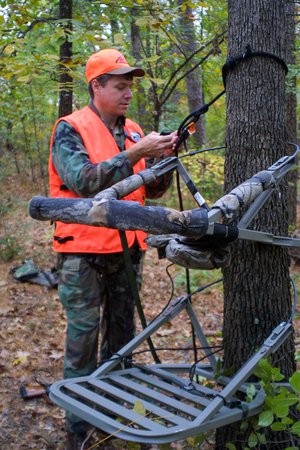
Dugger says setting up right next to another hunter’s stand with the hopes they won’t show that morning also is not advised. If that hunter does come to the woods, it can cause an unnecessary confrontation and a last-minute scramble to set up in a different location, both of which lower your chances of getting a deer as well as other hunters in the area.
“We have literally millions of acres of public land in Arkansas to hunt, so let’s try to spread out and give each other some breathing room,” Dugger said.
If a stand does remain in an area for more than seven days, it’s also best not to try to hunt it or remove it yourself. Instead, call your local wildlife officer or the area headquarters to notify them of the violation.
“Be sure to include the GPS coordinates where the stand is or a good description of the location,” Dugger said. “We’ll contact the owner or remove the stand. It doesn’t matter if it’s on public land; if it isn’t yours, it’s not right to take it.”
Safety while in the stand should always be a top priority. No one should get in any treestand on public or private property without first putting on a full-body safety harness that’s in good working order. Although very few hunting accidents are reported each year, the vast majority of those accidents and fatalities that do occur are the result of a fall from a treestand.
“Most stands come with a full-body harness from the store, and there are plenty of comfortably-designed harnesses available on their own for a reasonable price,” Dugger said. “It’s just like a seatbelt in a car or a life vest in a boat, it doesn’t work if you don’t wear it.”
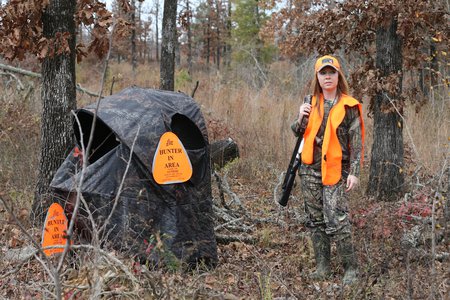
Safety also should be a priority for hunters who elect to use a ground blind. On public land, ground blinds must have some form of hunter orange visible from all sides of the blind to alert other hunters of your location.
“We still see a few hunters who don’t know that rule, and it’s important for safety on public land,” said Jeremy Brown, assistant Deer Program Coordinator. “On public land, you don’t know where other people may be set up, so being totally concealed at ground level with no hunter orange visible can lead to a possible accident because they can’t see you in the background. The deer don’t pay any attention to the hunter orange, and your movement is still contained, so it won’t affect your hunt other than to give you a little added safety.”
Even with the orange on the blind, hunters should still wear their hunter orange vest and hat any time they are in the woods. Many hunting accidents over the years have occurred just after a hunter shot at a deer and exited their blind or stand but failed to put their hunter orange during the excitement.
Hunters also should make note that cutting branches to create shooting lanes, brush in blinds or make room for a treestand also is not allowed. While a hunter can twist off a few small twigs and branches to fit their stand against the tree properly, the only cutting device allowed while hunting on a WMA is a hunting knife for field-dressing and skinning your game.
“You can gather some dead and downed limbs to form a ground blind or use a fallen treetop as a blind if you find one close to the area you want to hunt,” Dugger said. “A dead treetop in the right place can be one of the best blinds you will find, and you only need to bring a chair or a bucket to the woods with you to sit on and be comfortable.”
More information on treestands and blinds can be found on Page 73 of the 2020-21 Arkansas Hunting Guidebook. Downloadable copies of the book are available at www.agfc.com/guidebooks.
Recent News
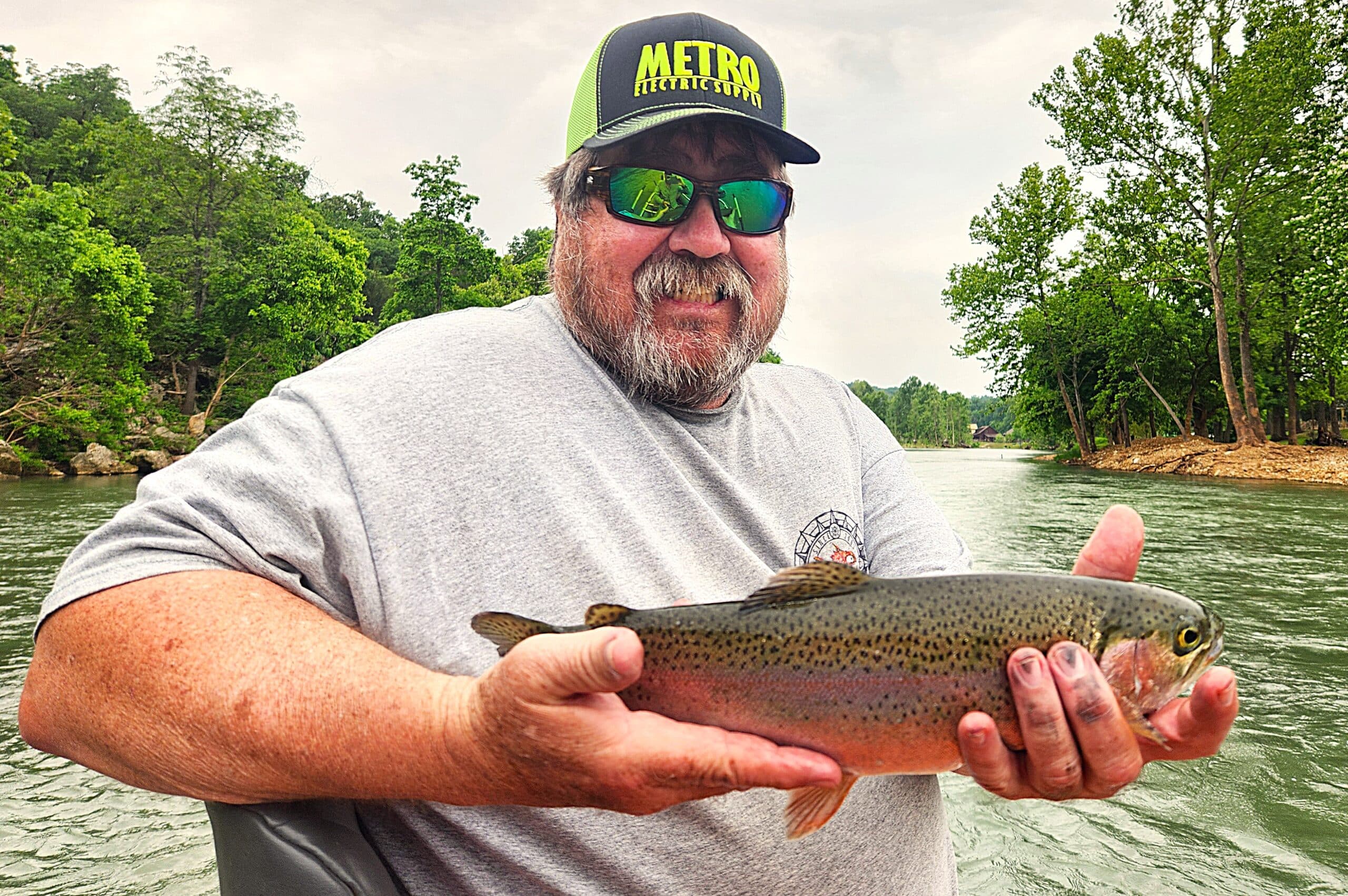
Arkansas Wildlife Weekly Fishing Report
Jun. 26, 2025
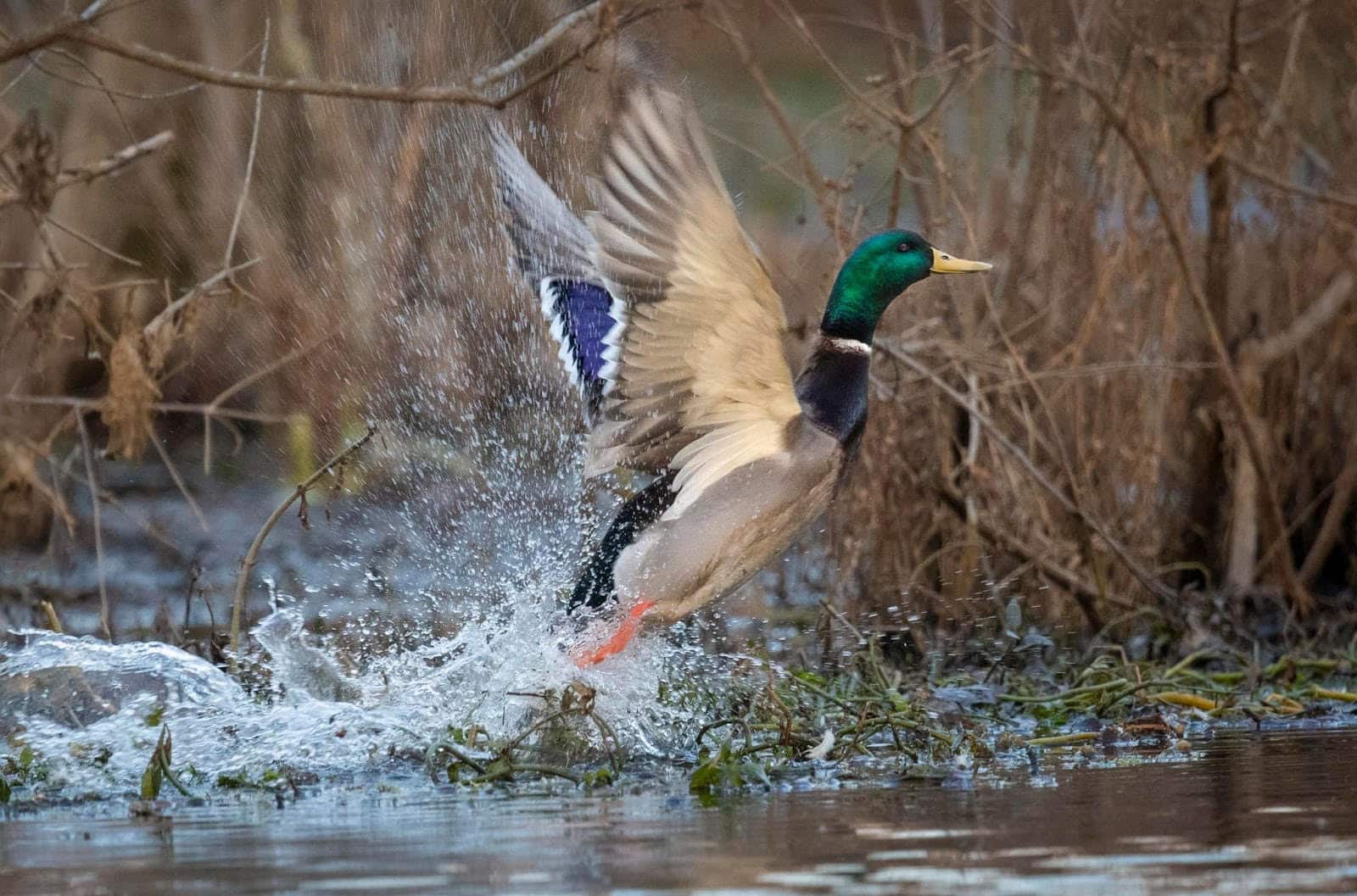
2025-26 Federal Duck Stamp reveal Friday
Jun. 26, 2025
Subscribe to Our Weekly Newsletter E-mails
Don’t miss another issue. Sign up now to receive the AGFC Wildlife Weekly Newsletter in your mailbox every Wednesday afternoon (Waterfowl Reports are published weekly during waterfowl season and periodically outside the season). Fishing Reports arrive on Thursdays. Fill in the following fields and hit submit. Thanks, and welcome!
